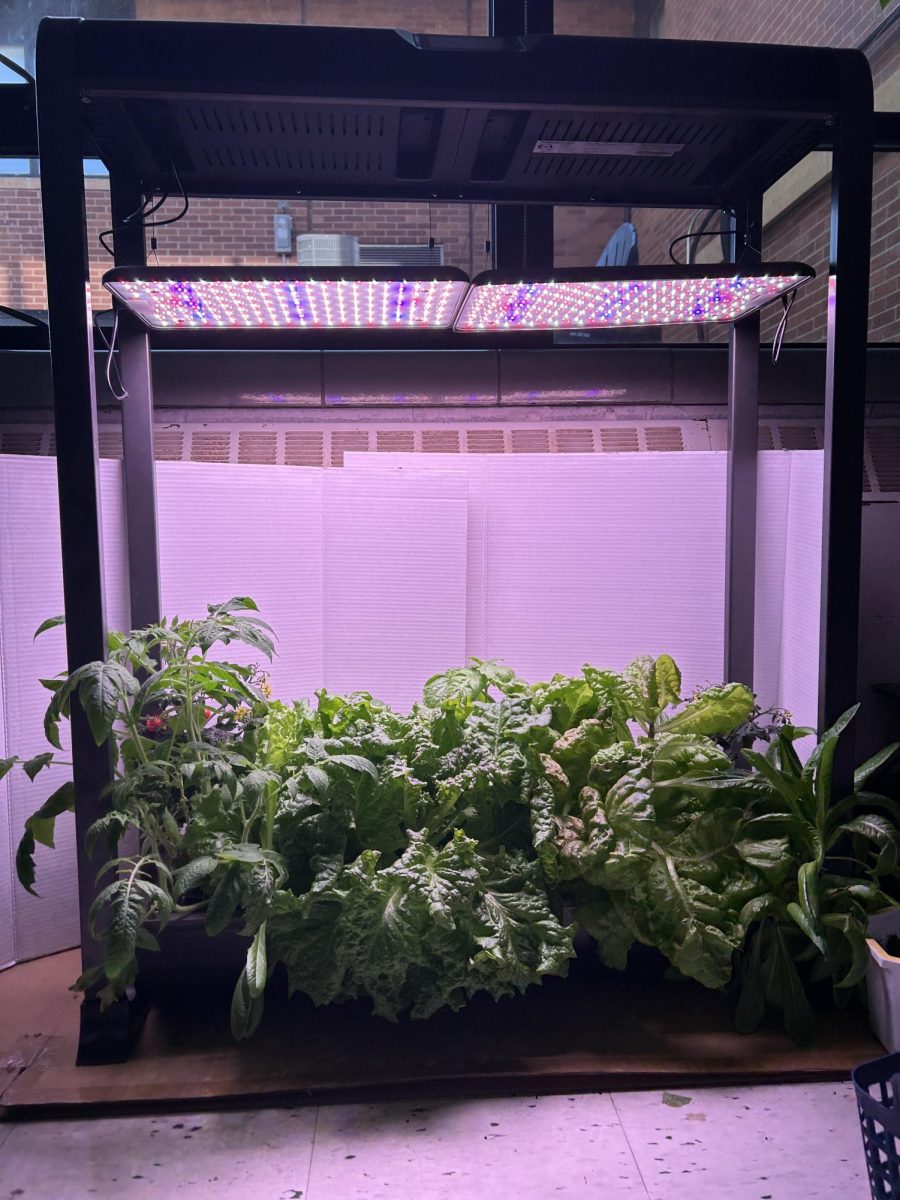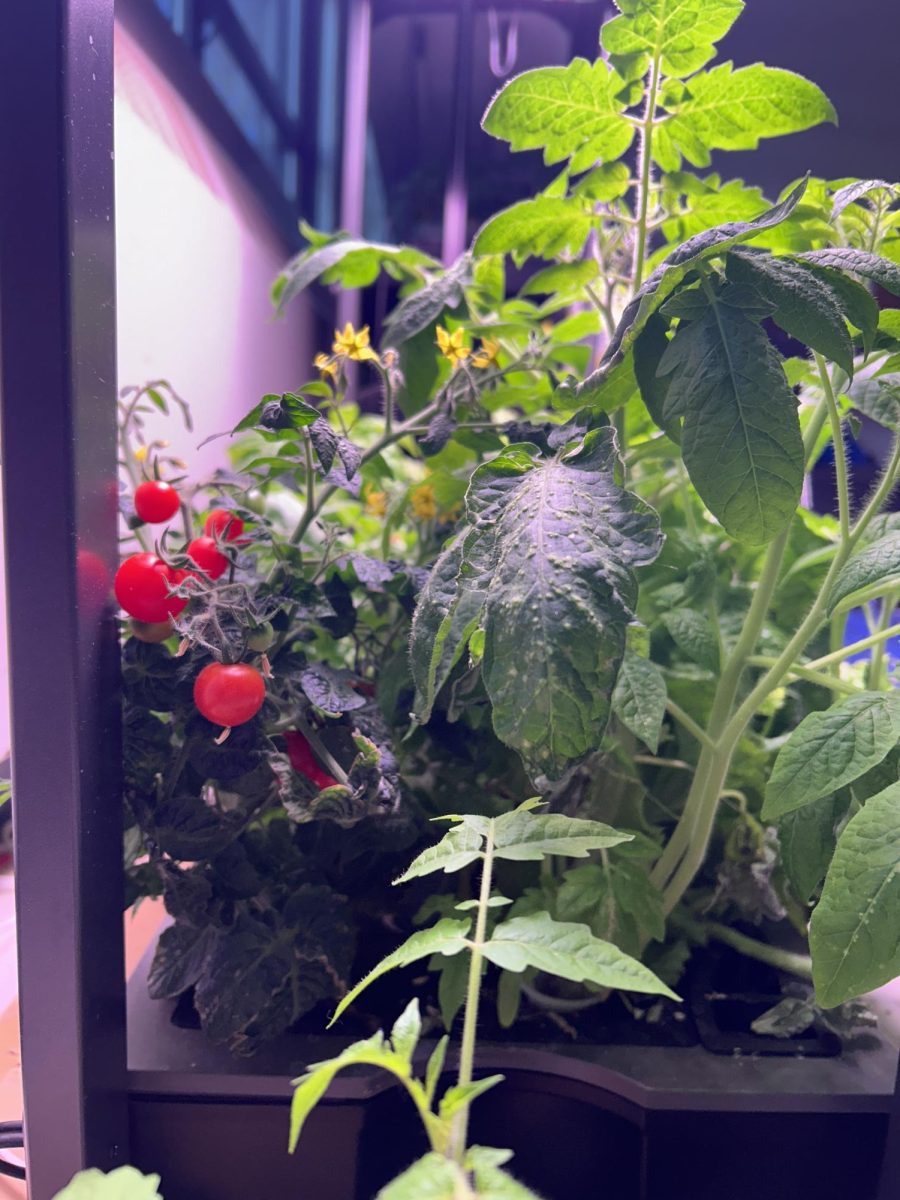A few months ago, Sandburg’s Sustainability Club, the club set out to build their very own hydroponics system under the guidance of Mrs. Snyder, the club’s faculty sponsor. A hydroponics system is a method of growing plants without soil. The plants are instead grown entirely in a water solution. This water solution includes nutrients for the plants such as nitrogen, phosphorus, potassium, and other nutrients that benefit the plant’s growth.
Another unique thing about a system such as this is that it uses artificial lighting to boost plant growth. Sustainability Club used LED light for this purpose.

Hydroponic systems have many advantages, such as a higher yield/output from the plants, the ability to grow plants without soil, and reduced risk of soil-borne pests and diseases. They also don’t require a lot of maintenance. Mrs. Snyder said “They required very low maintenance. All they needed were refills of water and, once a week, liquid plant food. They also grew on timers, which made them energy efficient.”
There were also some challenges in starting this process. Mrs. Snyder states, “The hardest part was trying to find the space and access to electricity to start the hydroponics system.”
But after the club strategized and found a solution, club members got to work. The members helped with the assembling and maintaining of the stations.
The hydroponic systems were first assembled and planted in late February and have grown tremendously since then. During the project, one of the goals was to compare the growth of the plants in the hydroponics system to the growth of growing plants normally. To do this, Mrs. Snyder planted a tomato plant normally and a tomato plant in the hydroponics system. After two months, the normally-grown tomato plant is currently 20 centimeters tall and the one grown in the hydroponics system is 45 centimeters tall, making it over twice as big as the tomato plant grown normally.

Sustainability Club was excited by their findings that plants can be more efficiently grown with this kind of system given that their purpose is to seek ways that we can work together to protect the environment.
The idea was to introduce solutions to some of the major issues threatening the globe, like an increasing population and habitat destruction for more soil agriculture. Mrs. Snyder states “ I was looking at the prediction of population growth, and I was looking to solutions and wanted to bring it to a classroom level.”
These hydroponic systems allow people to grow food year-round via water, instead of seasonally in soil, and to recycle water and nutrients. The club used this project to investigate if these systems are scalable to feed larger populations.
The hydroponic system plants just finished growing last week, and Sustainability Club got to eat some of the vegetables they planted, like lettuce.
Overall, the hydroponics system was a great success this year, thanks to the investigations and hard work of members of the Sustainability Club and Mrs. Snyder. “Because of this success, the hydroponics will continue as a project next year. Next year they’ll be even better because of the knowledge that we have acquired this year,” Mrs. Snyder reports.

